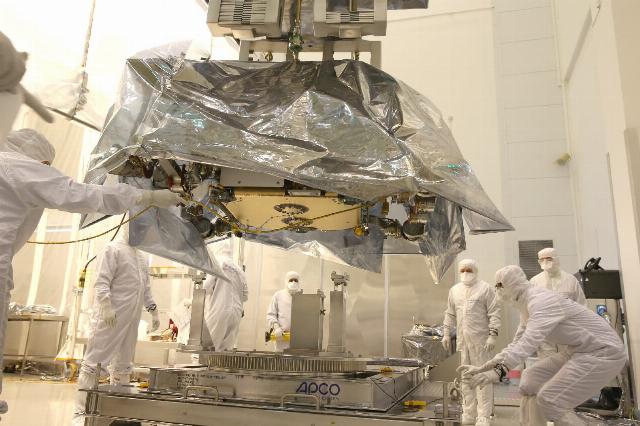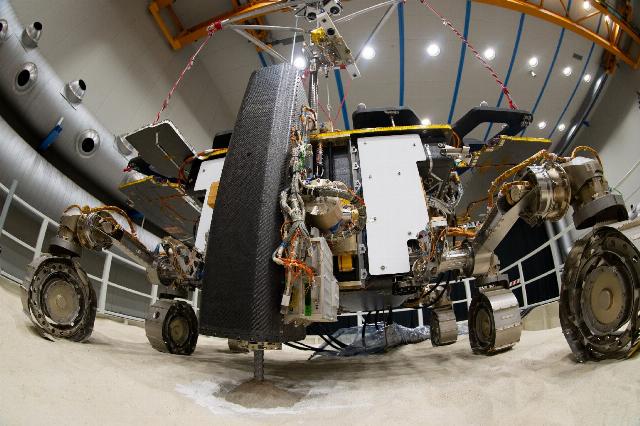The ExoMars project has been in limbo for the past two years. On the one hand, the European Space Agency promised to find resources to reformat the Rosalind Franklin rover mission, because without Russian participation, the rover lost its landing platform. On the other hand, it takes a lot of money and time. Finally, ESA decided on all the nuances and signed a contract to perform the necessary work. The mission has become noticeably more expensive and will be delayed for several more years.
A consortium of aerospace companies from around the world, led by Thales Alenia Space, received a contract for 522 million euros (approximately 567 million dollars, or 52 billion rubles). These funds will be received in several tranches over the next four years. It is assumed that within the framework of the contract, all the work necessary for the successful implementation of the second stage of the ExoMars program — sending a rover to Mars will be completed.
It may seem that the amount is large, but it needs to "fit" several important projects at once. First of all, a new landing platform is required instead of the Russian one. It will be simpler, devoid of scientific instruments, and the service life will be only a few days after landing. Some of the European equipment already created for Kazachka will be able to be applied as is or with minimal changes. But in any case, it is a difficult task. In fact, it is precisely because of the development of a new lander that the mission of the ExoMars rover Rosalind Franklin is delayed by at least four years.
The second significant item of expenditure is the maintenance of all equipment already created for the mission in good condition. The cancellation of cooperation on the second stage of the ExoMars program between ESA and Roscosmos occurred in early 2022, and the launch was planned in the fall. That is, the rover, the flight stage and the lander were preparing for launch with might and main. When it became known that the flight was canceled, Thales Alenia Space and its partners engaged in the conservation of equipment — these costs also need to be paid "retroactively".
But the necessary work is not limited to this. All units ready for the mission must be checked, transferred from a pre-launch or temporarily mothballed state to an appropriate long-term storage, assess the durability of each node and, if necessary, prepare a resource replacement. So that in four years, if the development of a new landing platform is not delayed, you can easily take a rover with a flight module and prepare them for launch again (and if it is delayed, the equipment would be safely stored longer).
In addition, while there is time for improvements, several small changes will be made to the design of the Rosalind Franklin. For example, they will add the ability to tilt solar panels to help clean them from dust.

The largest aerospace companies in the world were engaged in the creation of equipment for the ExoMars Rosalind Franklin rover mission. The rover itself was manufactured and assembled by Airbus Defense and Space (Great Britain), MDA Corporation (Canada), and the flight stage — OHB System (Germany). Under the new contract, they will have to make sure that all the details of the project they have already created will survive the four-year wait. The new landing platform will require additional participation from Thales Alenia Space units from Italy, France, Spain and Switzerland, as well as ArianeGroup (France). Pictured is one of the last individual tests of the rover before its integration into the flight and landing modules and the start of pre—launch training (2020)
Image source: Airbus Space
It should be noted that the 522 million euros allocated by ESA for the resurrection of ExoMars does not include launch services. A significant share of Roscosmos' investments in the program is the provision of Proton-M missiles. Instead of Russian carriers, NASA has offered its own, but it is not entirely clear which rocket the Rosalind Franklin will fly on. In addition, the American agency will provide radioisotope heaters and some financial assistance to the project. For 2024, the United States has promised to transfer about $ 30 million.
The ExoMars program originated in 2001 as part of the European Manned Flights to Mars project. Until the early 2010s, it was planned to have a broad partnership with the United States, but due to financial constraints, American participation was reduced to several instruments on landers and orbiters. In 2013, ESA signed a full-scale partnership agreement with Roscosmos.
The first stage of ExoMars involved sending the Trace Gas Orbiter (TGO) orbiter and the Schiaparelli soft landing technology demonstrator to the Red Planet. They started in March 2016, arrived in October, TGO is still working, but a soft landing did not work. The second stage of the program included a full-fledged landing platform of Russian design (Kazachok) and a European rover (Rosalind Franklin).
Initially, their launch was planned for 2018, then it was postponed to 2020 due to unavailability of some equipment, then to 2022 due to unavailability of software, insufficiency of some tests and coronavirus logistics restrictions. Now the rover with a new simplified landing platform will launch no earlier than 2028.

